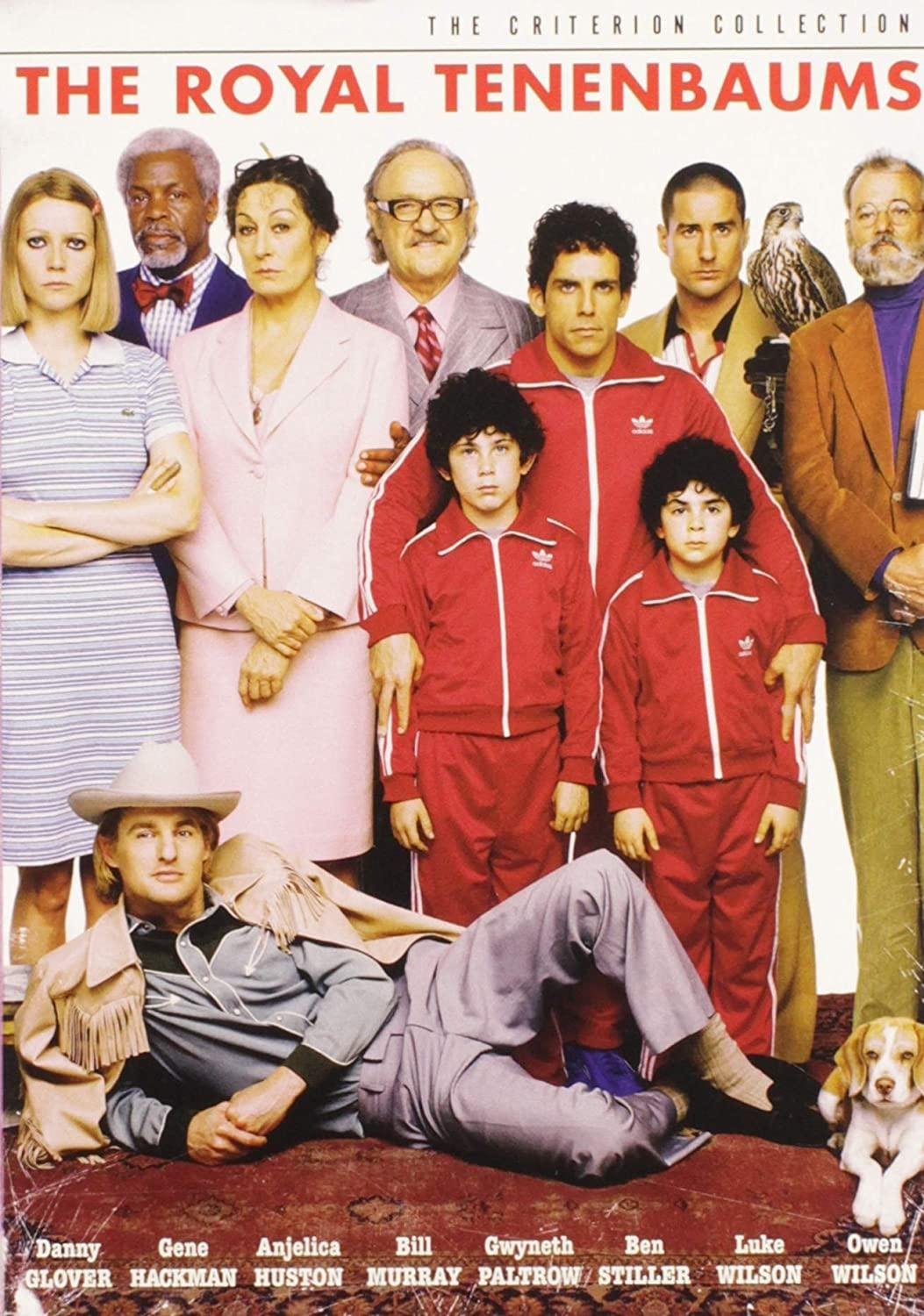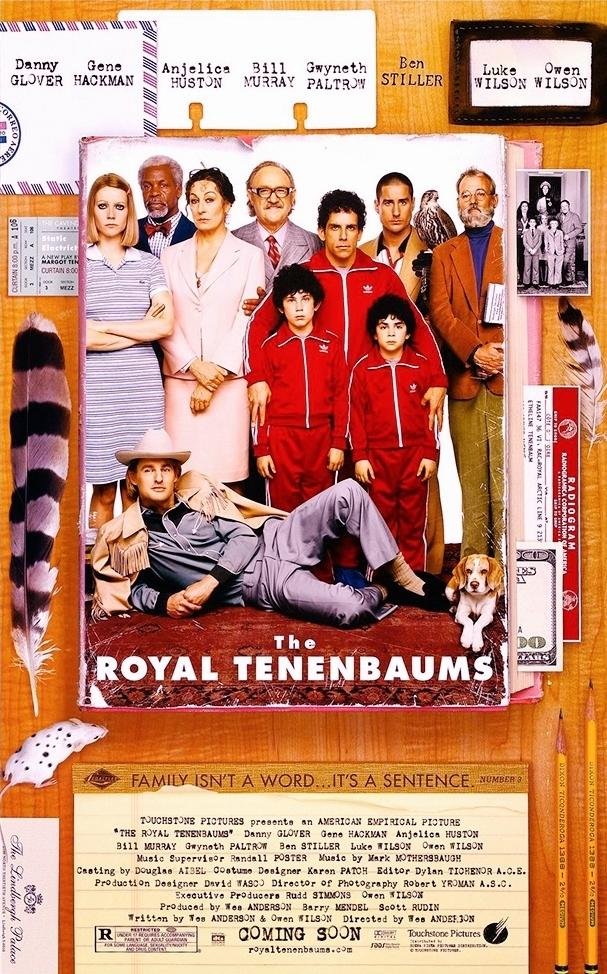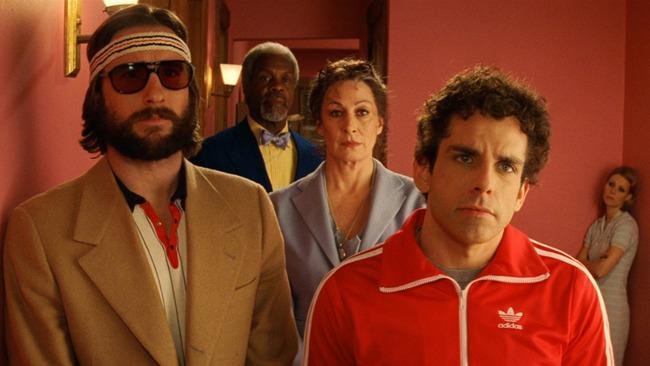The Quirky Brilliance of Wes Anderson’s ‘The Royal Tenenbaums’: A Cinematic Masterpiece
Wes Anderson‘s ‘The Royal Tenenbaums’ is a cinematic masterpiece that showcases the director’s unique and quirky style. Released in 2001, this film tells the story of a dysfunctional family of former child prodigies who reunite after years of estrangement. With its offbeat humor, intricate set designs, and memorable characters, ‘The Royal Tenenbaums’ has become a fan favorite and a classic in Anderson‘s filmography. In this article, we’ll delve deeper into what makes this film a true gem and why it continues to captivate audiences to this day.
Wes Anderson‘s ‘The Royal Tenenbaums’ is a cinematic masterpiece that showcases the director’s unique and quirky style. Released in 2001, this film tells the story of a dysfunctional family of former child prodigies who reunite after years of estrangement. With its offbeat humor, intricate set designs, and memorable characters, ‘The Royal Tenenbaums’ has become a fan favorite and a classic in Anderson‘s filmography. In this article, we’ll delve deeper into what makes this film a true gem and why it continues to captivate audiences to this day.

Introduction to Wes Anderson and “The Royal Tenenbaums”
Wes Anderson is a beloved American filmmaker known for his quirky and whimsical style. His 2001 film, “The Royal Tenenbaums,” is a cult classic and a prime example of Anderson‘s distinct aesthetic. The film tells the story of a dysfunctional family of child prodigies who reunite with their estranged father, played by the incomparable Gene Hackman. With its colorful sets, eccentric characters, and clever dialogue, “The Royal Tenenbaums” has become a fan favorite and a defining work in Anderson’s filmography.
Brief overview of the plot and main characters
Wes Anderson’s ‘The Royal Tenenbaums’ revolves around the dysfunctional Tenenbaum family, who were once considered prodigies in their respective fields. The patriarch, Royal Tenenbaum, played by Gene Hackman, has been estranged from his family for years and decides to fake a terminal illness to reconcile with them. The film follows the family’s attempts to reconcile their past and present, including the three siblings played by Gwyneth Paltrow, Ben Stiller, and Luke Wilson, as well as their mother, played by Anjelica Huston. Anderson‘s signature style of quirky humor and eccentric characters is showcased throughout the film, making it a beloved cult classic among cinephiles.
The use of color and set design in the film
Wes Anderson’s use of color and set design in ‘The Royal Tenenbaums’ is nothing short of extraordinary. The vibrant hues and unique textures of each character’s individual spaces add depth and personality to the film. Anderson’s signature attention to detail is evident in every scene where the colors, patterns, and objects work together to create a visually stunning environment. The set design is also a major contributor to the film’s atmosphere, with each location serving as a distinct backdrop to the complexities of the characters’ lives. The bold use of color and intricate set design in ‘The Royal Tenenbaums’ is a testament to Anderson‘s unique and creative vision as a director.

Analysis of the soundtrack and its significance in the film
The soundtrack of Wes Anderson’s ‘The Royal Tenenbaums’ is a crucial element of the film, highlighting its melancholic and quirky tone. The use of classic rock and pop songs by The Rolling Stones, The Beatles, and Nico, among others, creates a nostalgic atmosphere that complements the film’s themes of lost youth and family dysfunction. Moreover, the original score by Mark Mothersbaugh provides a unique musical backdrop that enhances the story’s emotional moments. Overall, the soundtrack plays a significant role in shaping the film’s mood, making it a standout feature of Anderson‘s style.
The casting choices and performances of the actors
One of the most remarkable aspects of Wes Anderson’s ‘The Royal Tenenbaums’ is the casting choices and performances of the actors. Each character is perfectly matched with their respective actor, and the performances are nothing short of phenomenal. Gene Hackman’s portrayal of the manipulative and estranged patriarch, Royal Tenenbaum, is both charming and despicable. Gwyneth Paltrow’s melancholic portrayal of Margot Tenenbaum is unforgettable, and Luke Wilson’s portrayal of the emotionally damaged Richie Tenenbaum is haunting. The supporting cast, including Ben Stiller, Owen Wilson, and Anjelica Huston, also deliver outstanding performances that make the film a true ensemble masterpiece.
Themes of family dysfunction and reconciliation
Wes Anderson’s ‘The Royal Tenenbaums’ explores the themes of family dysfunction and reconciliation in a unique and whimsical way. The story follows the Tenenbaum family, who are all former child prodigies with their own set of issues and conflicts. With the arrival of their estranged father, Royal Tenenbaum, the family dynamics are thrown into chaos, and long-buried secrets are unearthed. However, as the story unfolds, the characters are forced to confront their past and their relationships with each other, leading to moments of reconciliation and forgiveness. Anderson‘s signature quirky style and the outstanding performances of the cast make ‘The Royal Tenenbaums’ a must-see film for anyone interested in exploring the complexities of family relationships.

The film’s exploration of depression and mental illness
Wes Anderson‘s ‘The Royal Tenenbaums’ is a Masterpiece in the exploration of depression and mental illness. The film delves deep into the dark and complex psyche of the Tenenbaum family. From Richie’s depression and suicidal tendencies to Margot’s aloofness and self-harming, the characters in the film are a reflection of the mental struggles that many people face in their lives. Anderson’s use of vibrant colors, quirky characters, and the unconventional narrative style creates a unique and poignant portrayal of mental health issues. The film is not just a story about a dysfunctional family, but a powerful commentary on the importance of seeking help and support for those dealing with mental illness.
The influence of literature and art on the film’s style and content
Wes Anderson‘s ‘The Royal Tenenbaums’ is a prime example of how literature and art can influence a film’s style and content. Anderson takes inspiration from J.D. Salinger’s ‘The Catcher in the Rye’ and the works of American artist Edward Gorey. The film’s quirky characters and melancholic tone reflect Salinger’s literary style, while the use of Gorey’s illustrations throughout the film adds an artistic element to the storytelling. Anderson’s use of symmetry and bold color palettes also reflect the influence of art movements like Art Deco and Pop Art. The film’s unique blend of literary and artistic influences creates a visually stunning and emotionally resonant cinematic experience.
The impact of “The Royal Tenenbaums” on contemporary cinema
The impact of Wes Anderson’s “The Royal Tenenbaums” on contemporary cinema cannot be understated. This 2001 film was a critical and commercial success, and helped to establish Anderson as one of the most unique and innovative filmmakers of his generation. The film’s distinctive visual style, quirky characters, and offbeat humor have influenced a whole generation of filmmakers, and helped to redefine what was possible in mainstream cinema. From its iconic soundtrack to its intricate sets and costumes, “The Royal Tenenbaums” remains a touchstone of contemporary cinema and a must-see for any fan of movies, actors, and the art of storytelling on the big screen.
Conclusion and personal reflection on the significance of the film
In conclusion, Wes Anderson‘s ‘The Royal Tenenbaums’ is a cinematic masterpiece that perfectly showcases the director’s unique and quirky style. The film’s themes of family, love, and redemption are expertly woven together with Anderson‘s signature visual style and offbeat humor. The performances from the talented ensemble cast are exceptional, particularly Gene Hackman as the titular character. Overall, ‘The Royal Tenenbaums’ is a must-watch for any fan of Wes Anderson’s work or anyone looking for a thought-provoking and entertaining cinematic experience. Personally, I was blown away by the level of detail and care put into every aspect of the film, and it has solidified my love and admiration for Anderson‘s filmmaking style.
For more information about Wes Anderson’s ‘The Royal Tenenbaums’, including movie details, cast information, etc..
check out the filmaffinity page.



